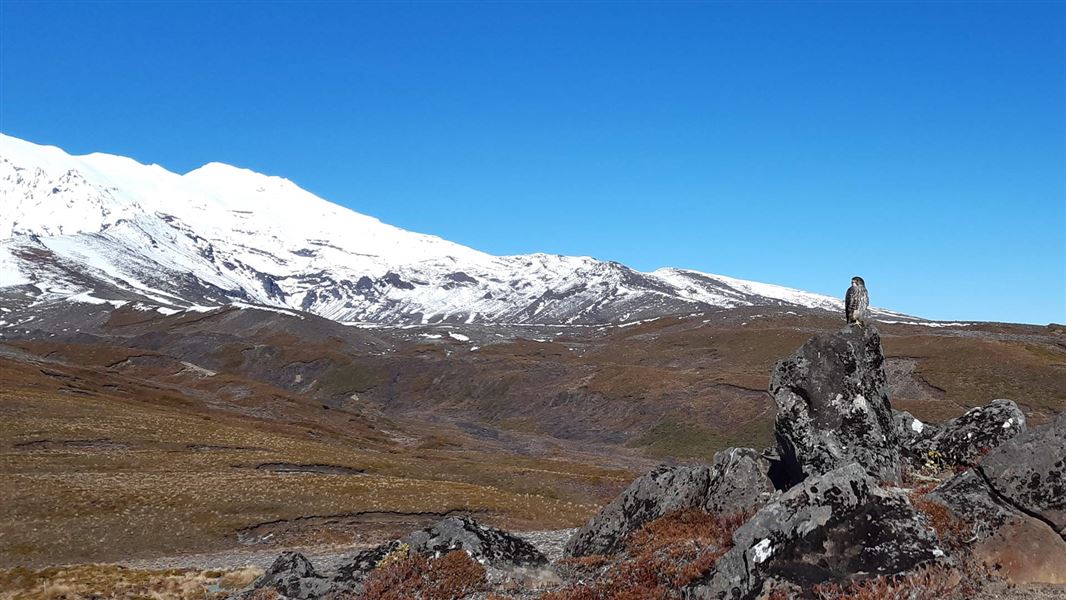Tongariro is one of only three World Heritage Sites in New Zealand, recognised for its unique cultural and natural heritage.
The ancient story of Tongariro is well known throughout Aotearoa – a legendary battle between Central North Island volcanoes for the affections of Mount Pīhanga.
Image gallery
Tongariro National Park is home to a wide array of historically and culturally significant sites. The park’s walks take visitors past cascading waterfalls, around alpine lakes and over historic roads. From short walks to multi-day tramps, Tongariro contains an experience for every visitor.
Many scenes from The Lord of the Rings were filmed in Tongariro National Park, and Mount Ngāuruhoe was digitally altered to create Mount Doom.
The mountains at the heart of the park have cultural and spiritual significance to Ngāti Tūwharetoa and symbolise the spiritual links between this community and their environment. Ngāti Hikairo ki Tongariro is the guardian hapū/sub-tribe of Ngāti Tūwharetoa as the hau kāinga/true people of the homeland for the Tongariro territory.
Getting there
Tongariro National Park is located in the central North Island. It is easily accessed by road and a 4–5 hr drive from both Auckland and Wellington. Whakapapa Village is the main gateway into the park, accessible on the western side off SH48.
Daily national bus services are available to and from Tongariro National Park and the nearby towns of Ohakune, Waiouru, National Park, and Tūrangi. Various shuttle buses meet the national buses and trains at Whakapapa Village and nearby towns.
History
Ko Tongariro te maunga Tongariro is the mountain
Ko Taupō te moana Taupö is the lake
Ko Ngāti Tūwharetoa te iwi Ngāti Tūwharetoa is the tribe
Ko te Heuheu te tangata te Heuheu is the man/Chief
Ngatoroirangi, the founding ancestor of Ngāti Tūwharetoa, ascended the great mountains of the Central Plateau 30 generations ago. It was then that he named Tongariro/Seized by the Southern Wind and the many features of the surrounding landscape, declaring this area as home for his descendants. It is from these beginnings that Ngāti Tūwharetoa maintains its intrinsic responsibility to protect the mountainous area to which they belong.
The generosity and foresight of Ngāti Tūwharetoa saw the heart of the mountainous area made sacrosanct in 1887, with the intent that the Crown would stand alongside Ngāti Tūwharetoa to ensure the continued protection of Tongariro. This led to the establishment of the Tongariro National Park in 1894, a first for New Zealand, and fourth in the world.
In 1993, Tongariro became the first area to be inscribed on the World Heritage List under the revised criteria describing cultural landscapes. The mountains at the heart of the park have cultural and spiritual significance to Ngāti Tūwharetoa and symbolise the spiritual links between this community and its environment. The park has active and extinct volcanoes, a diverse range of ecosystems and some remarkable landscapes.
The continued occupation by Ngāti Tūwharetoa in this environment ensures the cultural, spiritual and environmental values are protected and shared with all those who encounter this dynamic landscape.
